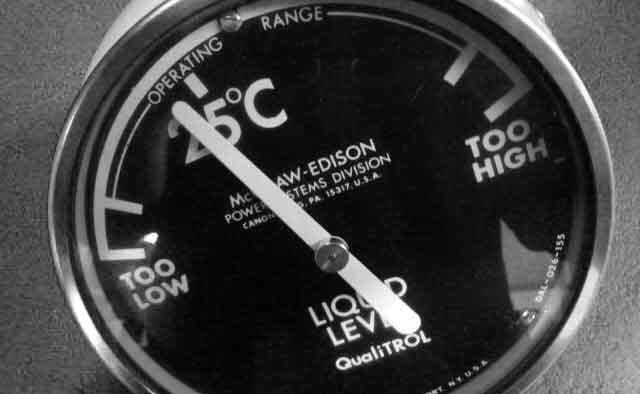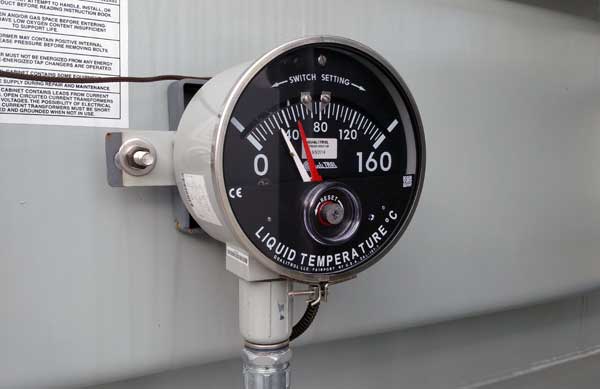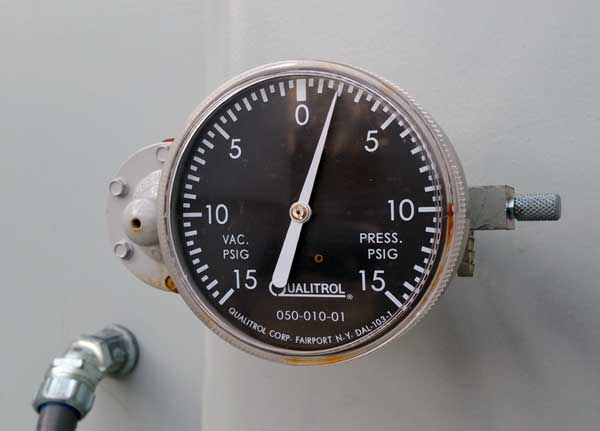
The case of the transformer should always be regarded as energized until the tank ground connection is inspected and found to be adequate (OSHA 29 CFR 1910.269(l)(11)). Photo Credit: Paul Chernlkhowsky (Flickr CC)
Transformers are vital links in electrical power distribution and are among the most reliable components in the system. Because a transformer failure is usually of a very serious nature, requiring extensive repair and long downtime, regular preventive maintenance procedures are the best assurance of continued high reliability.
The following inspections should be made on a routine basis. The extent and frequency of maintenance should be based not only on the size or voltage level but also on the relative importance of the transformer in the system.
Safety Considerations
If a transformer is given an external visual examination, the case of the transformer should be regarded as energized until the tank ground connection is inspected and found to be adequate (OSHA 29 CFR 1910.269(l)(11). The procedures discussed in this article should only be performed by personnel qualified to work around energized high voltage equipment.
1.) Check Liquid Level

Transformer liquid level gauge indicates the amount of insulating fluid inside the tank. Photo Credit: ebay.
The core and coils of liquid-filled transformers, as the name implies, are immersed in a liquid. This liquid serves two purposes.
First, it is an important part of the insulating medium. Second, it serves to transfer heat away from the windings to be dissipated by the cooling fins, tank surface, or radiator.
The liquid level should be checked regularly, especially after a long period of low load at low ambient temperature, when the level should be at its lowest point. It is important that liquid be added before the level falls below the sight glass or bottom reading of the indicator.
The liquid level indicator is calibrated to Temperature at 25°C at normal operating conditions.
If a transformer is not equipped with a liquid-level indicator, the liquid level can be checked by removing the inspection plate on the top of the transformer or by removing the top if no inspection plate is available. It is necessary to de-energize the transformer prior to either procedure.
Current, voltage, and temperature measurements should be taken at the time of peak load and the liquid level reading at the end of a low-load period. Readings are best achieved by means of external metering, observe all safety precautions.
Permanent records should be kept of the readings for comparison with previous similar conditions. Periodic testing of the insulating fluid is recommended by taking samples from the tank drain valve.
Related: Insulating Liquids: Basic Properties, Types and Applications Explained
2.) Record Temperature Readings

Continued operation of a transformer at an over temperature will accelerate deterioration of the insulating liquid, increasing the risk of failure.
Transformers are rated to carry their nameplate load in kVA with a given heat rise when the ambient temperature is at a standard level. For example, a liquid-filled transformer might be rated to deliver nameplate capacity with a 65°C (149°F) temperature rise above a 30°C (86°F) ambient temperature (24-hour average).
Exact temperature rise values are listed on the nameplate. If the transformer is equipped with temperature gauges, readings should be taken regularly and recorded.
If the gauge has a maximum-temperature indicator, readings from both indicators should be recorded, and the maximum temperature indicator should be reset. Excessive temperatures indicate an overload or perhaps some interference with the cooling system.
Continued operation at an over temperature will accelerate deterioration of the insulating liquid, resulting in reduced life expectancy of the solid insulation and greatly increasing the risk of failure. Constant monitoring against over temperature can be achieved by installing special alarm contacts on the temperature gauge.
3.) Observe the Pressure/Vacuum Gauge

Transformer pressure/vacuum gauge indicates the integrity of the sealed tank construction.
Commonly found on sealed-type transformers, pressure/vacuum gauges indicate the integrity of the sealed tank construction. Pressure/vacuum gauges should be added, whenever feasible, in sealed transformers with provisions for installing them.
Readings from this gauge should be compared to the recommendations of the manufacturer for normal operating ranges. High pressures indicate an overload or trouble inside the tank and should be investigated immediately. A sustained zero pressure reading indicates a leak or a defective gauge.
